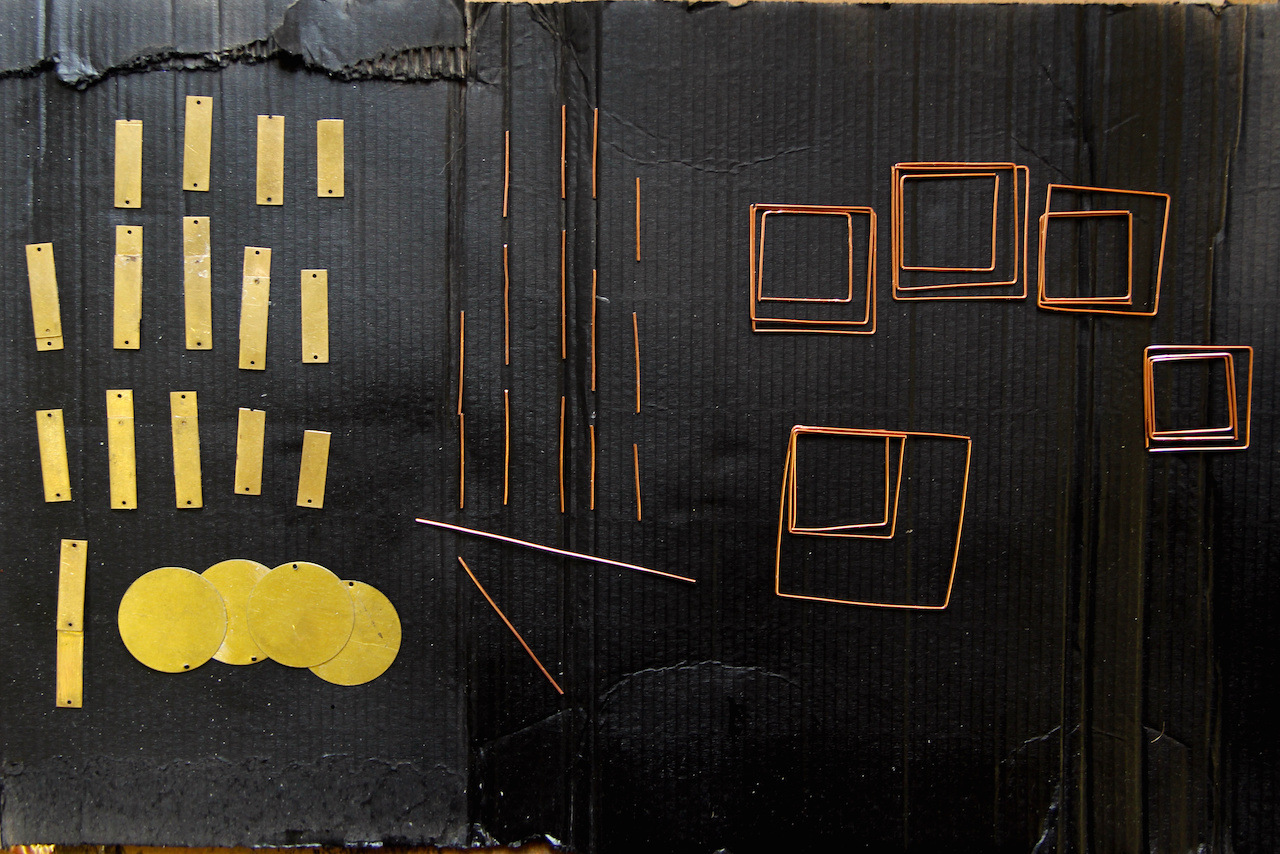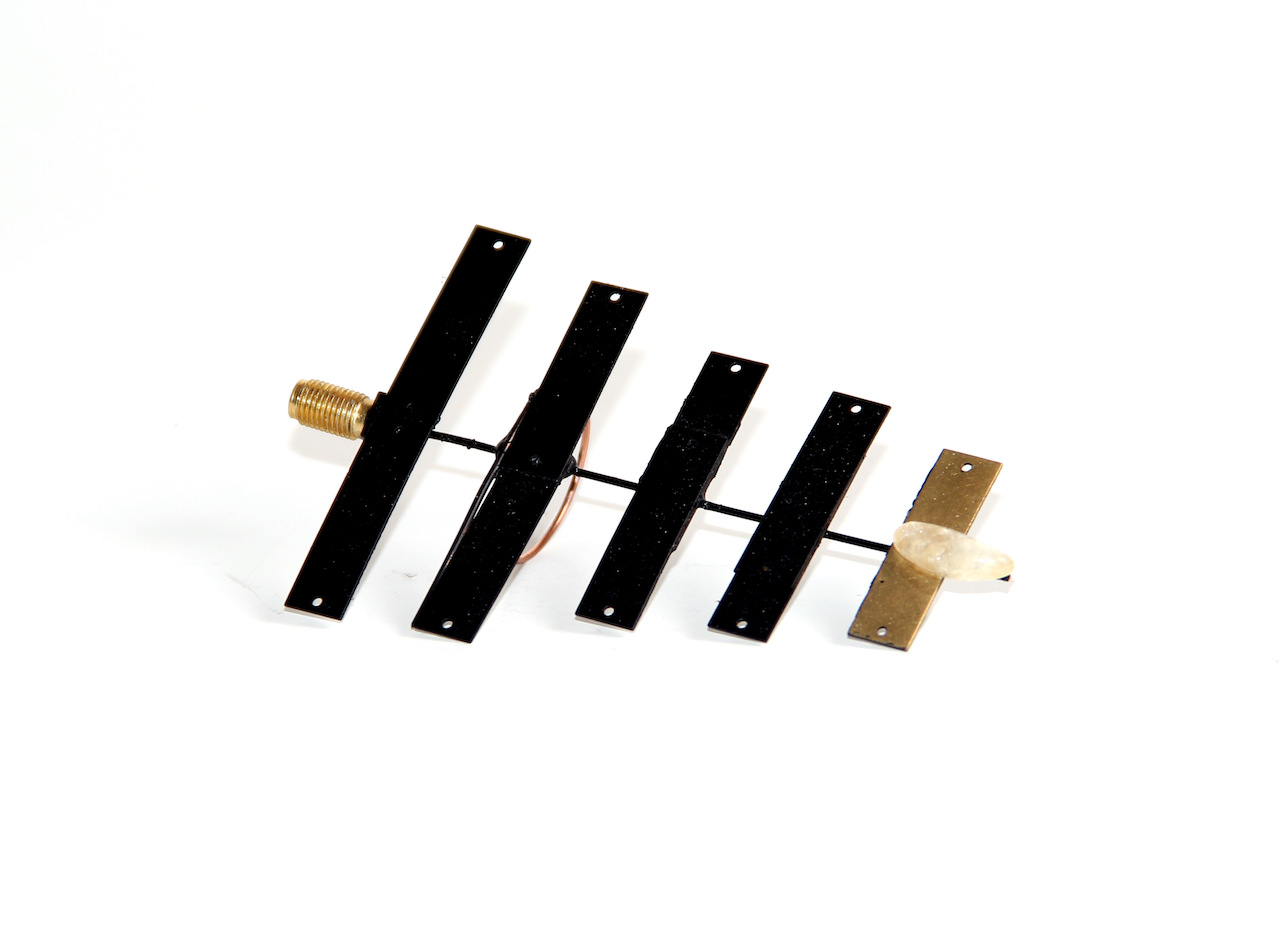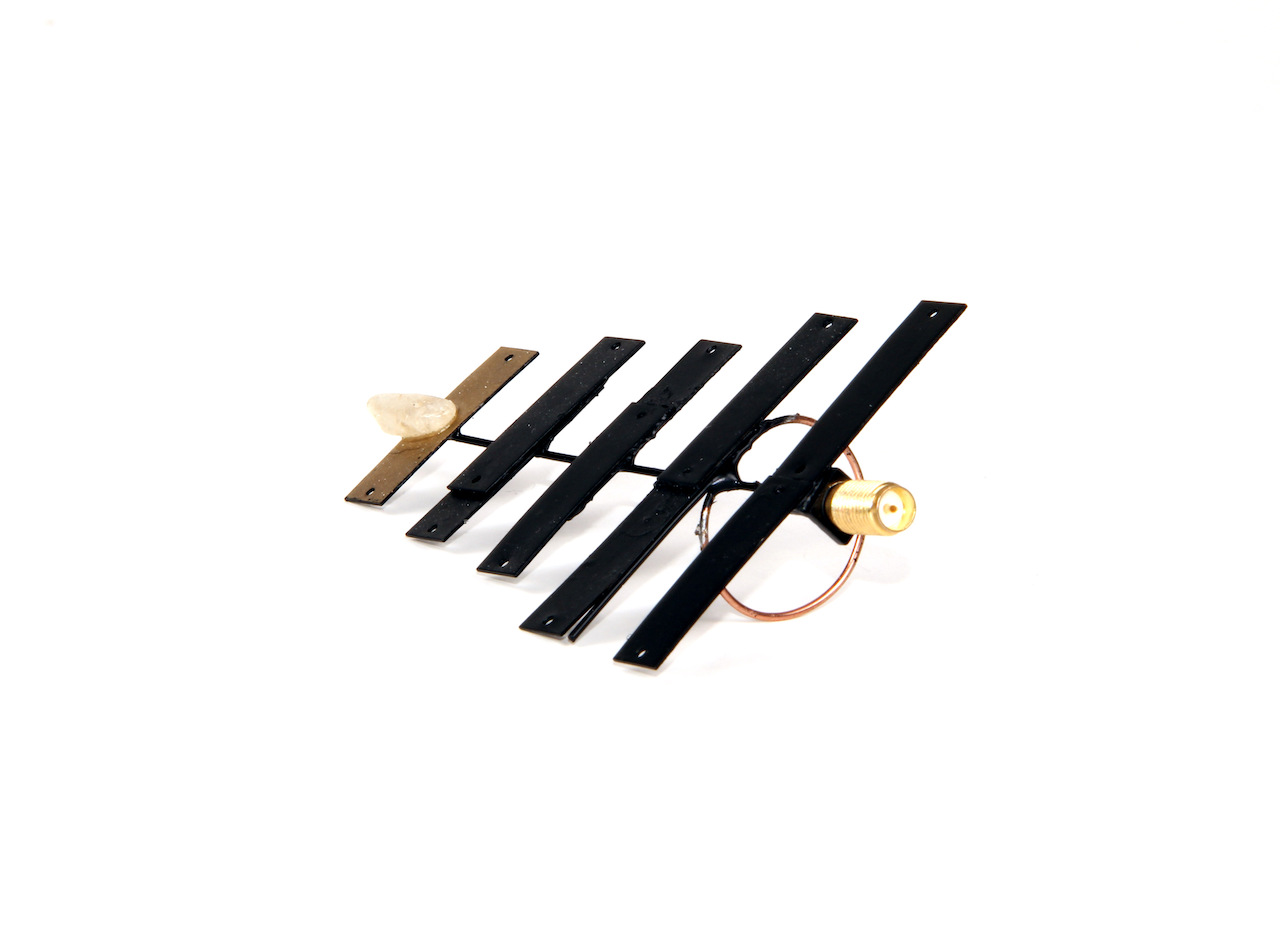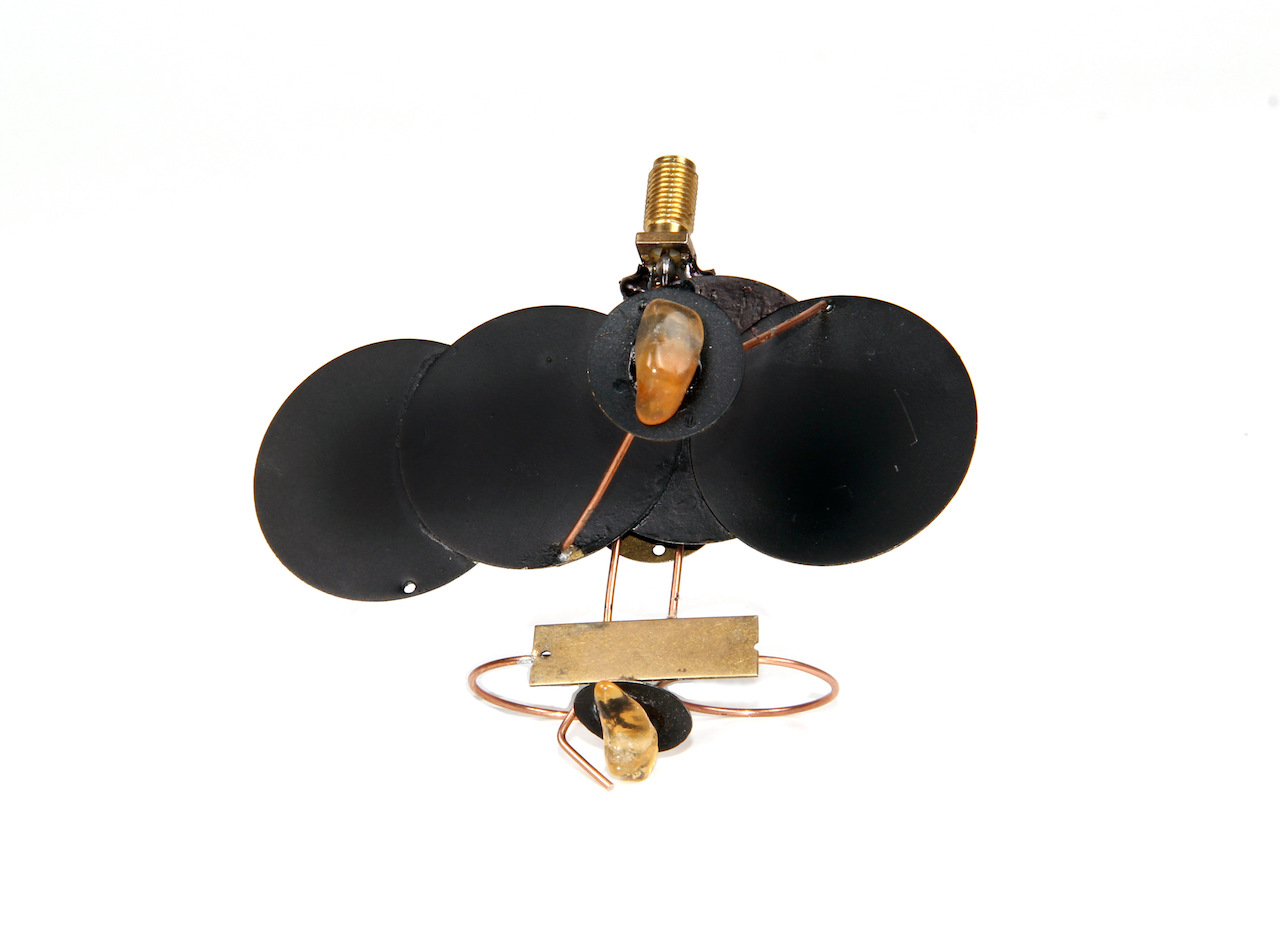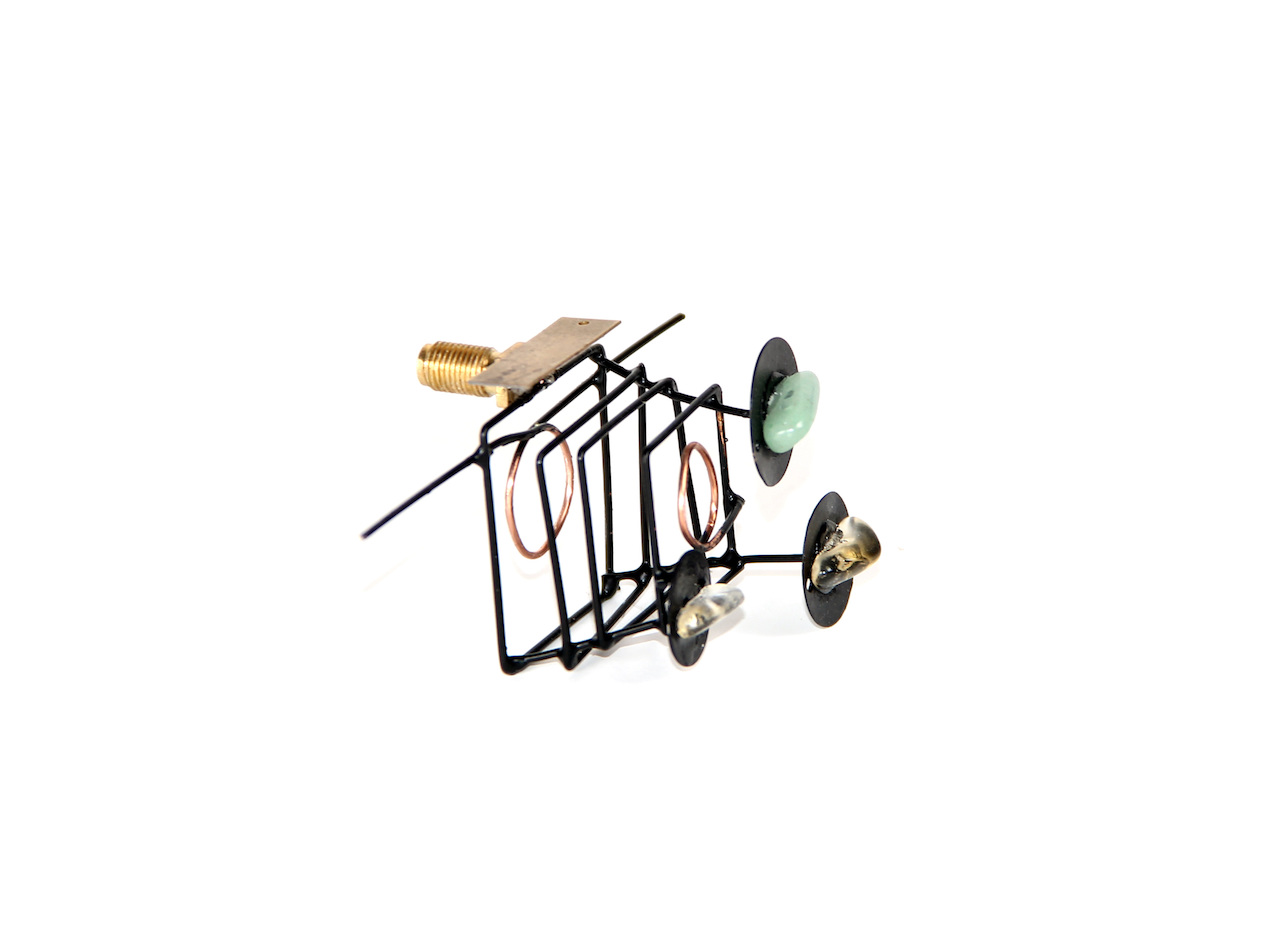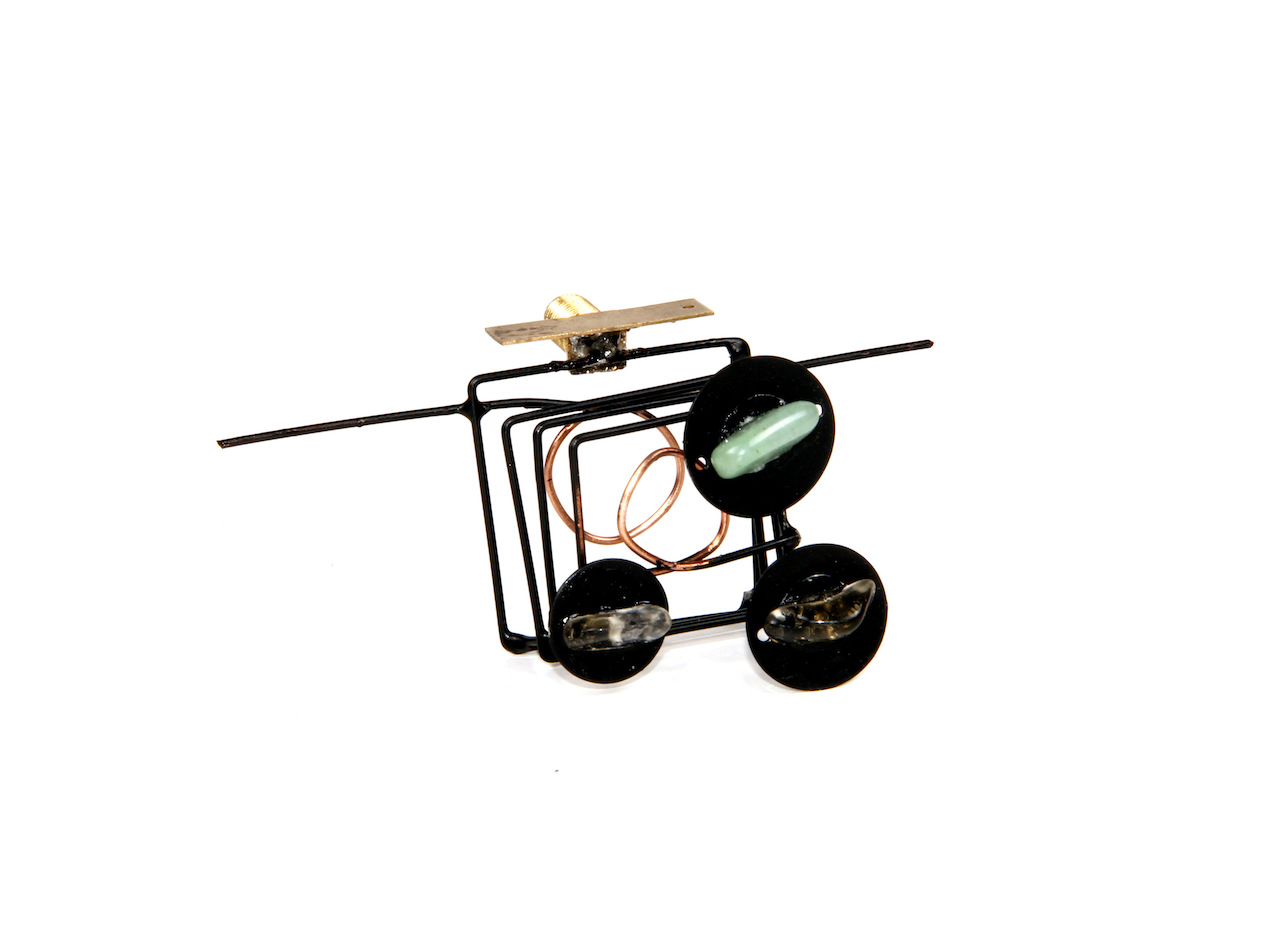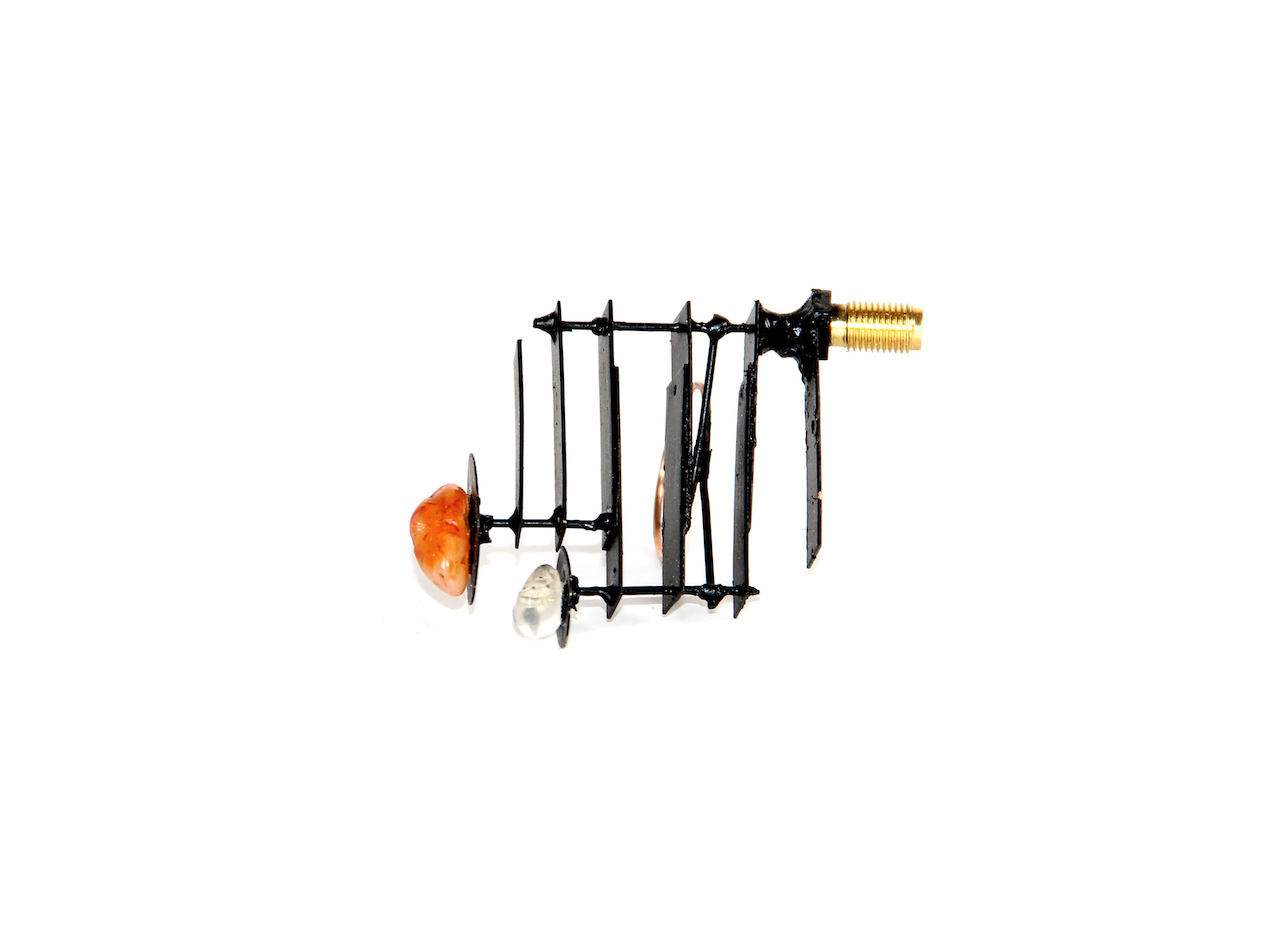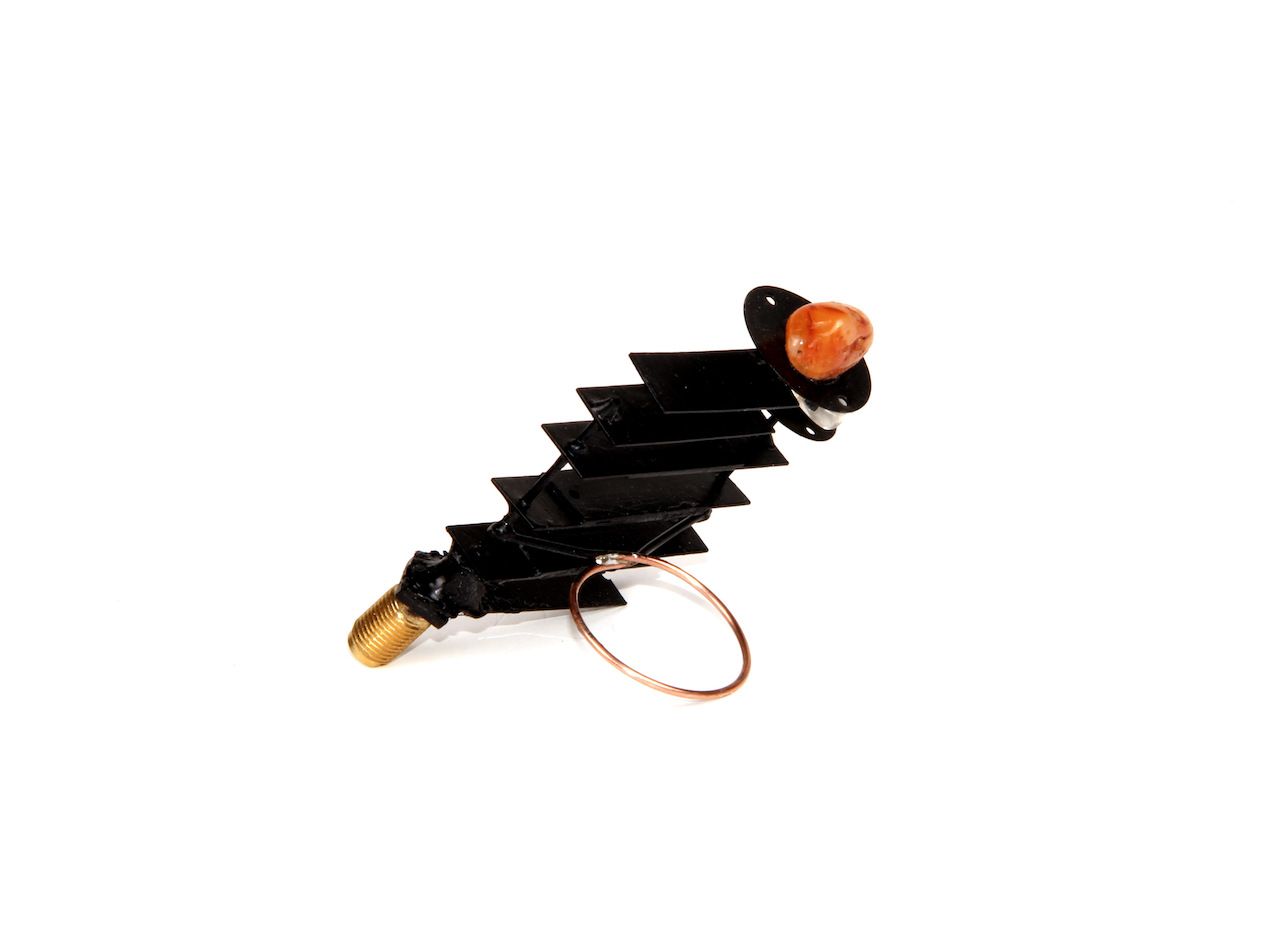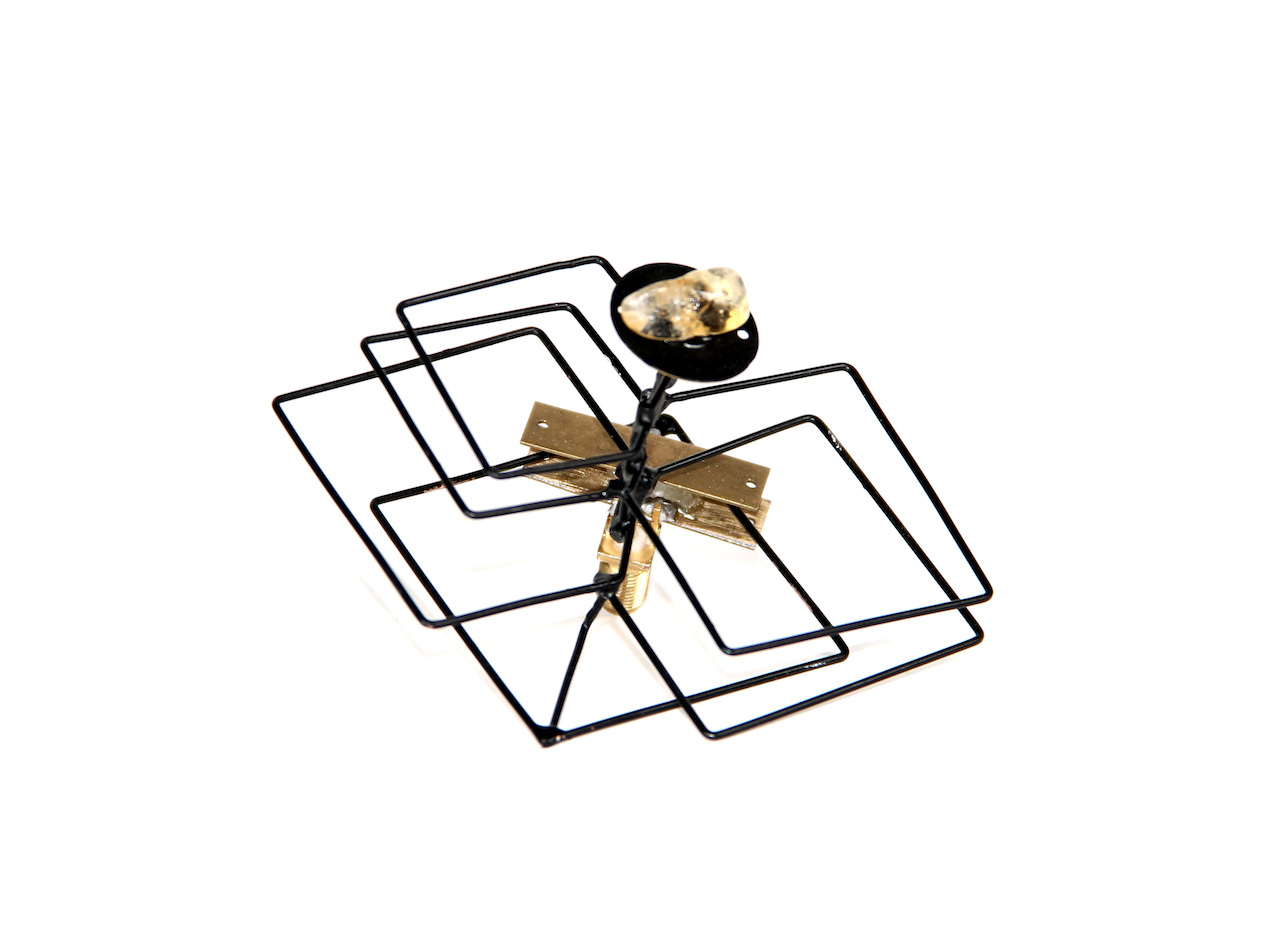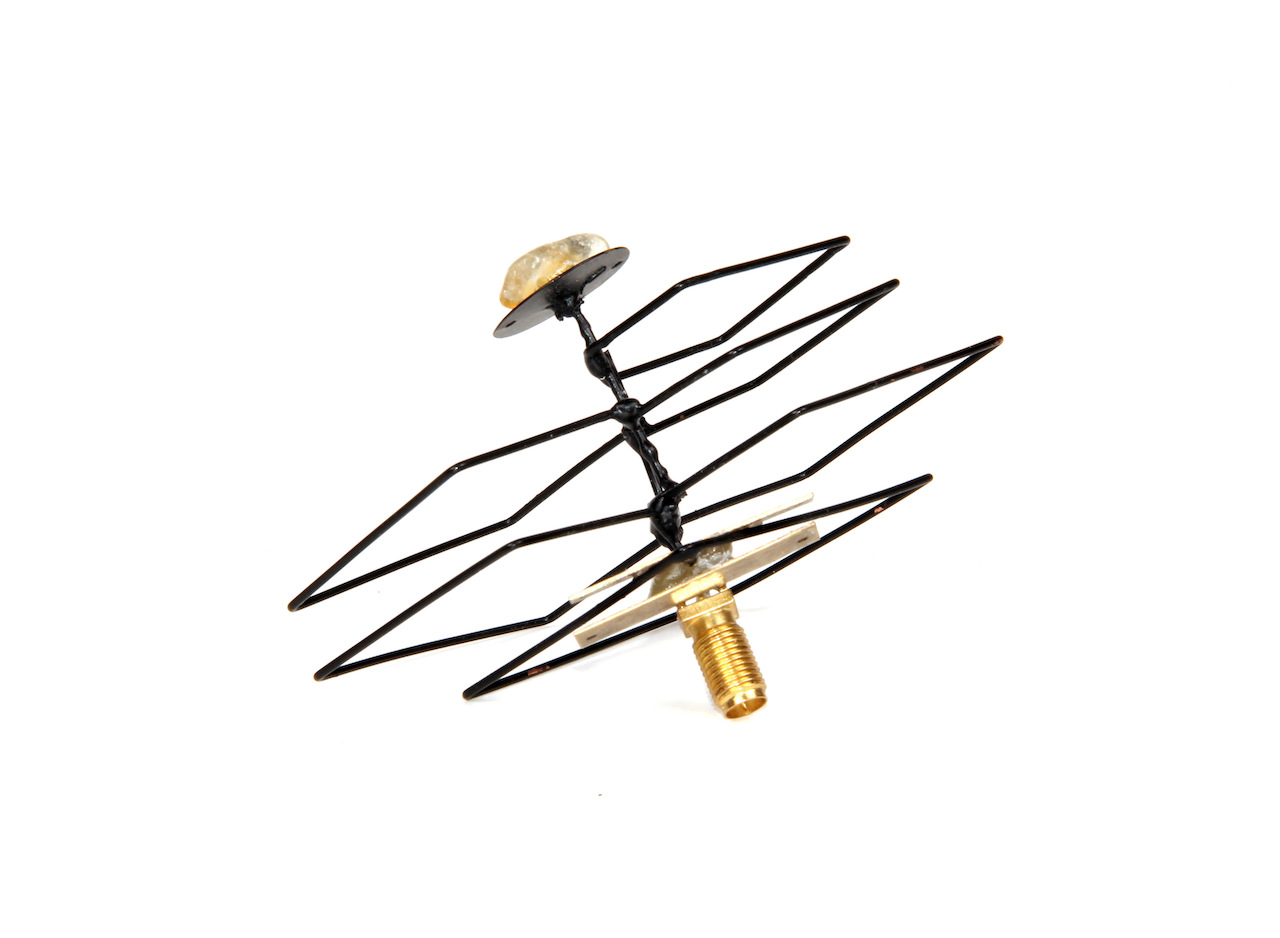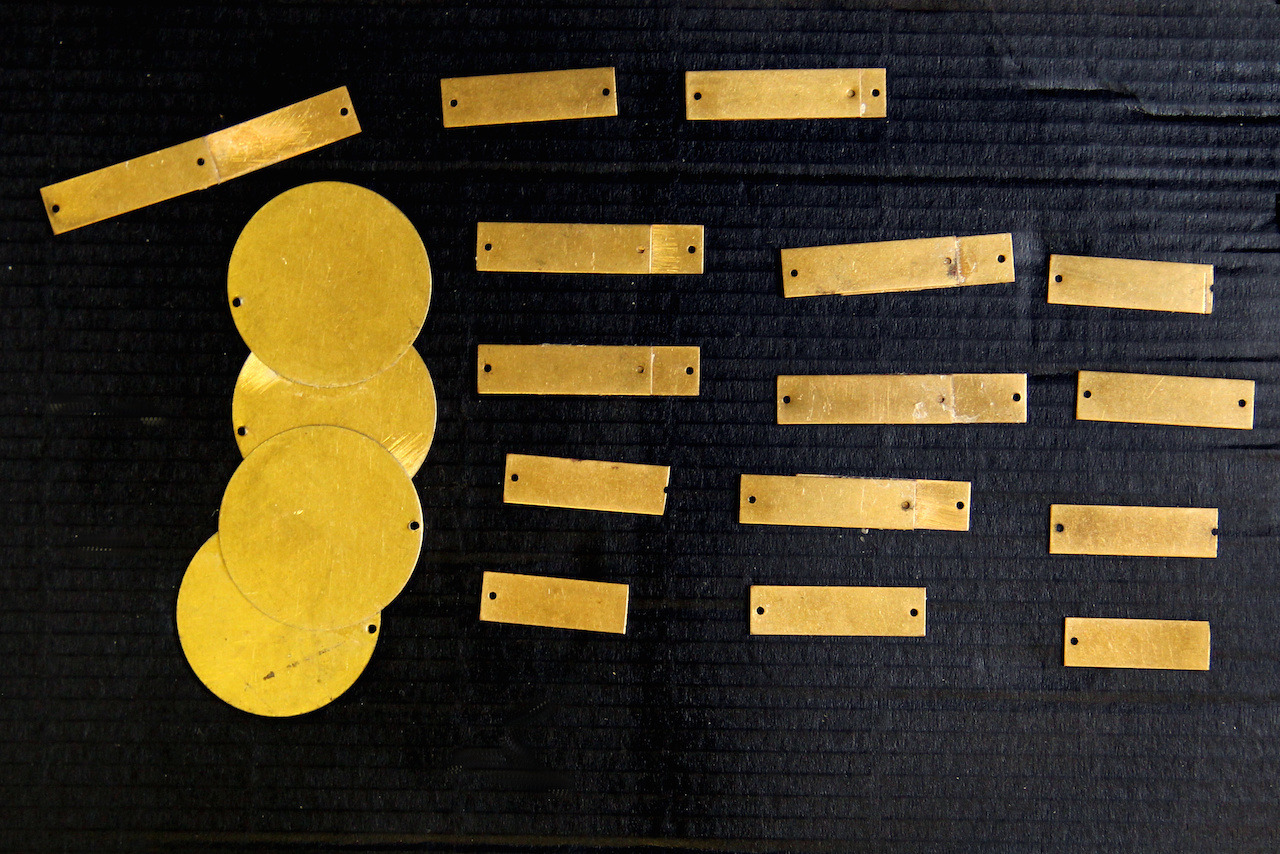
The process of transmitting and receiving electromagnetic signals is very physical: matter moves in rhythms syncopated by the speed of light and the dimensions of the materials it traverses. Antennas are designed with specific shapes and sizes optimized for particular types of transmissions and their corresponding frequencies. For example, 2.4GHz WiFi signals are better picked up by antennas with lengths that are a multiple of 31.25mm.
In our world of embedded, pervasive, wearable technologies we are encompassed by such a variety of signals that we can think of this relationship from a different perspective: given different objects of specific shapes and sizes, what are the signals that reverberate with their bodies? Can we (re-)sensitize ourselves to these meshes of planetary reach and affect?
These are collections of wearable antennas made of copper and brass pieces modeled after the shapes and sizes of body parts, sections and appendages. They are meant to be worn around the part of the body from which they were modeled, creating an additional connection between the original template body and that of the wearer.
Like the astrolabe, these antennas suggest a more embodied form of navigating a network. They are ontological machines for exploring the relationships between humans, nature, culture, objects and networks, and making their intra-actions a little more significantly felt.
[1] Barad, Karen (2003). Posthumanist Performativity: Toward an Understanding of How Matter Comes to Matter. Signs, 28(3), 801–831.
[2] Butler, Judith (2011). Gender Trouble: Feminism and the Subversion of Identity. Routledge.
[3] Calvino, Italo (1997). Invisible Cities. Random House.
[4] Chabot, Pascal (2013). The Philosophy of Simondon. Bloomsbury Academic.
[5] Flusser, Vilém (1985). Filosofia da caixa preta: ensaios para uma futura filosofia da fotografia.
[6] Harawy, Donna (1991). Simians, Cyborgs and Women: The Reinvention of Nature. Routledge.
[7] Latour, Bruno (2012). We Have Never Been Modern. Harvard University Press.
2020: Signals and Words, XPO - Enschede, NL
